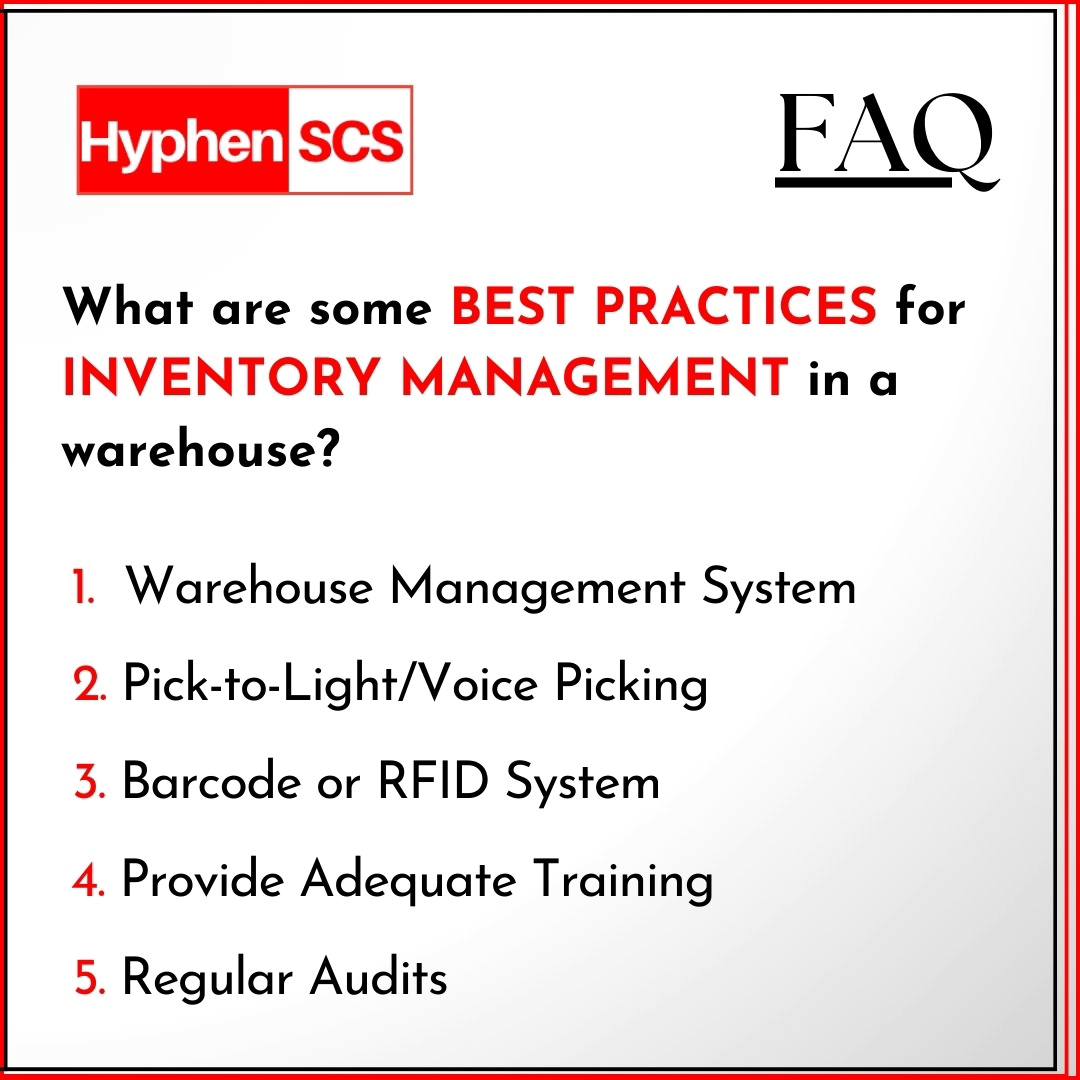
Inventory management is a critical aspect of warehouse operations. It involves the efficient handling and organization of stock items to ensure smooth operations, minimize errors, and maximize productivity.
Here are some best practices for inventory management in a warehouse:
1. Warehouse Management System (WMS): A WMS is a software application that streamlines warehouse operations by automating tasks, reducing errors, and providing real-time inventory tracking.
This keeps item status and location updated, and provides valuable insights for strategic decisions, boosting efficiency.
2. Pick-to-Light/Voice Picking: These technologies speed up the picking process. Pick-to-light uses lights for item indication, while voice picking uses voice commands. They also help in reducing errors in the warehouse.
3. Barcode or RFID System: Systems like Barcode or RFID allow for quick and accurate inventory tracking. They significantly cut down the time spent on manual data entry and reduce the time needed for inventory counts.
4. Provide Adequate Training: Being up-to-date with the latest technologies and procedures is crucial. Well-trained staff are the backbone of efficient operations. Regular training keeps the team updated.
5. Regular Audits: This process helps prevent stockouts and overstocking. Discrepancies between actual stock and system records can be rectified. Regular inventory audits help identify discrepancies.
By implementing these best practices, warehouses can optimize their operations, improve efficiency, and ultimately, increase profitability.
